Title search results
Showing 1 - 20 of 494 items

Il y a d’abord une évidence: les services que les prisons sont censées rendre ne compenseront jamais les torts qu’elles…
causent. Depuis les années 1960, ce constat d’un immense gâchis a amené un vaste mouvement à œuvrer à l’abolitionnisme pénal: en finir avec toutes les prisons, mais aussi avec les autres institutions qui forment le système pénal, comme la police et les tribunaux. Ce projet politique poursuit ainsi un objectif ambitieux: rendre vraiment justice aux victimes et répondre à leurs besoins, en plus de prévenir les violences systémiques et interpersonnelles.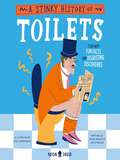
This audiobook features music and special effects. Listen along and enjoy the fun that is A Stinky History of Toilets…
. You sit on it every day, but how much do you really know about your toilet? Discover the history of pooping and peeing in this frankly disgusting nonfiction audiobook. Authors Katie Nelson and Olivia Meikle have scoured the toilet bowls and sewers of the world to find out how humans have done their business throughout history. It's time to get to the bottom of toilets! Prepare to be revolted by: A fossilized Viking turd discovered by archaeologists The Mongol catapult used to fling smelly poop at their enemies The reason ancient Romans used pee to wash their clothes Filled with poop facts and vomit-inducing stats, you will also learn how diseases like cholera spread through bad sanitation, why some of the earliest toilets had a tendency to explode, and how medieval kings and queens had special helpers to wipe their bums. It's a history book like no other!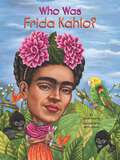
Who was frida kahlo? (Who Was?)
By Sarah Fabiny. 2016
You can always recognize a painting by Kahlo because she is in nearly all—with her black braided hair and colorful…
Mexican outfits. A brave woman who was an invalid most of her life, she transformed herself into a living work of art. As famous for her self-portraits and haunting imagery as she was for her marriage to another famous artist, Diego Rivera, this strong and courageous painter was inspired by the ancient culture and history of her beloved homeland, Mexico. Her paintings continue to inform and inspire popular culture around the world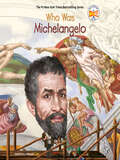
Who was michelangelo? (Who Was?)
By Kirsten Anderson. 2022
Travel to Renaissance Italy and learn about the young apprentice who went on become a true master, and one of…
the most beloved sculptors and painters of all time in this addition to the #1 New York Times Best-Selling Who Was? series! Michelangelo created some of the world's most recognizable art, from the statue of David to the intricate ceiling fresco of the Sistine Chapel. Beyond his well-known painting and sculpting, he was a gifted poet and architect. Young readers can learn about the entirety of Michelangelo's life, from his time as a young apprentice, his relationships with several Catholic popes and the Medici family, to his unwillingness to stop working into his late eighties. A perfect read for art lovers and fans of the Renaissance
Who was ferdinand magellan? (Who Was?)
By S. A Kramer. 2019
When Portuguese sailor Ferdinand Magellan set sail from Spain in 1519, he believed he could get to the Spice Islands…
by sailing west through or around the New World. He was right, but what he didn't know was that the treacherous voyage would take him three years and cost him his life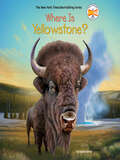
Where is yellowstone? (Where Is?)
By Sarah Fabiny. 2024
Which famous national park features a geyser that shoots water 185 feet into the air and thousands of American bison?…
Journey into the history of Yellowstone and its famous wildlife, canyons, rivers, forests, and more in this audiobook for young listeners! From the #1 New York Times Best-Selling Who Was? series comes Where Is?, a series that tells the stories of world-famous landmarks and natural wonders! Established in 1857 as the first national park in the United States, Yellowstone has been drawing visitors to its beautiful landscape for over 150 years. Before it became a national park, the region was home to Native Americans for over 11,000 years, including the Shoshone, Lakota, Crow, Blackfoot, Flathead, Bannok, and Nez Perce tribes. Today, tourists come to the park from all over the world to camp and to visit the famous Old Faithful geyser and the Yellowstone Caldera, the largest super volcano in North America. The many animals that live in Yellowstone include bison, black and grizzly bears, elk, wolves, and more than three hundred species of birds. Yellowstone is so large that it has land in three different states — Wyoming, Montana, and Idaho. Learn the rich history of one of America's most beloved national parks in this book perfect for young explorers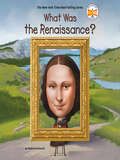
What was the renaissance? (What Was?)
By Roberta Edwards. 2025
Discover all there is to know about the Renaissance, the period in history that took Europe from the Middle Ages…
to modern times! Beginning in Italy, the Renaissance was a cultural movement that spread throughout Europe and affected art, science, technology, politics, and thought. From the 1300s to the beginning of the 1600s, scholars started to question what they knew and looked to literature and historical texts to develop new ideas for why things were the way they were. In just a short amount of time, the foundations for European life were uprooted and examined, leading people, including Leonardo da Vinci and Michelangelo, to explore new ways of thinking and being. Readers will learn why the Renaissance was such a pivotal time in European history and how it still influences us
In 1973 an old American Indian woman is the last of her tribe on a 214-acre tract of abandoned forest…
and she asks a relative to think of something to save the land from being turned over to the government upon her death. It seems to be the end of the Mashantucket Pequot Tribe, but it is just the beginning. Over the next three decades, the reservation grows, to more than 600 tribal members and the Foxwoods casino
Rebuilt from broken glass: a German Jewish life remade in America
By Fred Behrend. 2017
"Symbolized by a three-hundred-year-old Seder plate, the religious life of Fred Behrend's family had centered largely around Passover and the…
tale of the Jewish people's exodus from tyranny. When the Nazis came to power, the wide-eyed boy and his family found themselves living a twentieth-century version of that exodus, escaping oppression and persecution in Germany for Cuba and ultimately a life of freedom and happiness in the United States. Behrend's childhood came to a crashing end with Kristallnacht (the Night of Broken Glass) and his father's harrowing internment at the Sachsenhausen concentration camp. But he would not be defined by these harrowing circumstances. Behrend would go on to experience brushes with history involving the defeated Germans. By the age of twenty, he had run a POW camp full of Nazis, been an instructor in a program aimed at denazifying specially selected prisoners, and been assigned by the U.S. Army to watch over Wernher von Braun, the designer of the V-2 rocket that terrorized Europe and later chief architect of the Saturn V rocket that sent Americans to the moon. Behrend went from a sheltered life of wealth in a long-gone, old-world Germany, dwelling in the gilded compound once belonging to the manufacturer of the zeppelin airships, to a poor Jewish immigrant in New York City learning English from Humphrey Bogart films. Upon returning from service in the U.S. Army, he rose out of poverty, built a successful business in Manhattan, and returned to visit Germany a dozen times, giving him unique perspective into Germany's attempts to surmount its Nazi past." -- Amazon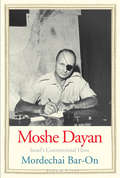
Moshe Dayan: Israel's controversial hero
By Mordechai Bar-On. 2012

"Water, earthquakes, accidents, the all-pervading weather, acid on paper; all of them have caused the disappearance of priceless books. But…
also, and more significantly, war, censorship, idleness, the desire for cultural annihilation. The destruction of books is not just another way of making objects disappear: it is an action against ideas, memory and thought. In this sobering work, Fernando Báez recounts the ways in which humans have destroyed books or allowed them to disappear. From the burning of the Library of Alexandria to the looting of the National Library of Baghdad to the burnings ordered by the Nazis and by the Spanish and European Inquisition, lost books are shown as wounds in the eternal struggle between culture and barbarism." -- Translation provided by NLS
The forgotten storm: the great tri-state tornado of 1925
By Wallace E Akin. 2002

The great sea: a human history of the Mediterranean
By David Abulafia. 2011
Covering topics from print journalism, activism, nuclear testing, and science and education to health physics, environmental cleanup, and kitsch, essays…
collected from the Hanford History Project s March 2017 conference along with additional new research illuminate facets of the Manhattan Project earlier scholars left unexplored and demonstrate how its legacy lives on. Adult. Unrated
Gaza unsilenced
2015
"During Israel's lengthy 2014 assault on Gaza, voices worldwide rose in stunned protest. Using numerous creative means, Palestinians and their…
allies bore witness to the Israeli attacks-and to the siege that has strangled Gaza ever since. Gaza Unsilenced foregrounds the words and images with which Gaza Palestinians recorded the pain, losses, and dislocations of the attacks, the continuing punishment of the siege, and their community's resilience and dignity.The book includes original contributions from the editors themselves along with essays, reportage, images, and poetry from Gaza and elsewhere. Contributors include: Ali Abunimah, Ramzi Baroud, Diana Buttu, Belal Dabour, Chris Hedges, Rashid Khalidi, and Eman Mohammed."-- Publisher's Synopsis
Burma '44: the battle that turned the war in the Far East
By James Holland. 2016
"Back in February 1944, a rag-taggle collection of clerks, drivers, doctors, muleteers, and other base troops, stiffened by a few…
dogged Yorkshiremen and a handful of tank crews managed to hold out against some of the finest infantry in the Japanese Army, and then defeat them in what was one of the most astonishing battles of the Second World War. The Defence of the Admin Box, fought amongst the paddy fields and jungle of Northern Arakan over a fifteen-day period, turned the battle for Burma. Not only was it the first decisive victory for British troops against the Japanese, more significantly, it demonstrated how the Japanese could be defeated. The lessons learned in this tiny and otherwise insignificant corner of the Far East, set up the campaign in Burma that would follow, as General Slim's Fourteenth Army finally turned defeat into victory.-- OCLC
Love and let die: James Bond, the Beatles, and the British psyche
By John Higgs. 2023
A deep-dive into the unique connections between the two titans of the British cultural psyche the Beatles and the Bond…
films and what they tell us about class, sexuality, and our aspirations over sixty dramatic years. Adult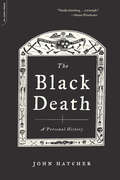
The Black Death: a personal history
By John Hatcher. 2009
"Recreating everyday life in a mid-fourteenth century rural English village, the author focuses on the experiences of ordinary villagers as…
they lived and died during the Black Death (1345-50). Hatcher describes the day-to-day existence of people struggling with the tragic effects of the plague."-- From publisher
Profiting from the peak: landscape and liberty in Colorado Springs
By John Harner. 2022
Colorado Springs, Colorado, has long profited from Pikes Peak and built an urban infrastructure to sustain that relationship. In Profiting…
from the Peak, geographer John Harner surveys the events and socioeconomic conditions that formed the city, analyzing the built landscape to offer insight into the origins of its urban forms and spatial layout, focusing particularly on historic downtown architecture and public spaces. He examines the cultural values that have come to define the city, showing how military and other institutions, tourism, political and economic conditions, cultural movements, key individual actors, and administrative policies have created a singular urban personality
How the world ran out of everything: inside the global supply chain
By Peter S Goodman. 2024
An extraordinary journey to understand the worldwide supply chain exposing both the fascinating pathways of manufacturing and transportation that bring…
products to your doorstep, and the ruthless business logic that has left local communities at the mercy of a complex and fragile network for their basic necessities